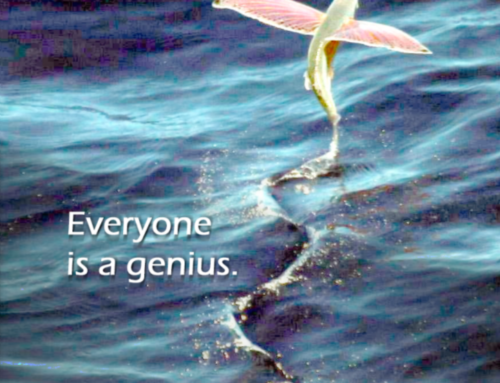
I have had the pleasure to work with Jennifer in the agile coaching classroom. She is a wonderfully creative and thoughtful coach who blog as at Kanna Glass Studios. Here she is…
Become an Agile Whisperer
If you are involved in the Agile movement as a Scrum Master or Agile Coach, you are involved in introducing change into an organization. Change is always disruptive. But there are ways to minimize the impact. Becoming mindful of how you introduce change is a very useful skill to develop.
When I look back at my 13 years of introducing change to larger organizations, I have gone through my own metamorphosis of how I encourage change. All three may have their place, but the more effective are the last two.
- The Bulldozer
- Fine Tuning
- Leaning In
The Bulldozer
Introducing a framework such as Scrum, is an example of the bulldozer approach. When you jump into Scrum with a team of people who are new to the framework, it’s very disruptive and chaotic. You are basically shoveling a massive change onto the team. It’s not necessarily bad to use the bulldozer tactic to introduce change, but it should be the exception rather than the rule. If you embrace the idea that this is massive change, you can help manage expectations of the team and people external to the team.
Personally, I love change. I get very bored of routine and introducing change just to do something different keeps things interesting for me. The majority of people don’t love change. Especially change introduced by someone else that has little relevance to your world or even a detrimental effect. I learned through the experience that bulldozing change onto others usually doesn’t work, unless there is a selective deliberate application, such as jumping into an Agile framework.
Fine Tuning
Once you are into a rhythm with your Agile framework the massive changes slow down and the team slides into a pattern of incremental changes. I have noticed that my teams have transitioned into a rhythm at about the three-month mark after starting Scrum. You don’t see the impact right away, but if you are maintaining your metrics properly, you can gauge whether the tuning has an impact over time. Even when retrospectives seem rote and stale, don’t give up on these valuable opportunities to keep tuning the team. If your retrospectives do become stale, change it up with games that teach a lesson, or use different retro formats to keep it fresh or even entertaining.
For a year I worked with a team that used the fine tuning approach. The team would review processes every two weeks and talk about things that could improve their performance. From month to month, it didn’t look like much change, but year over year, this team experienced 320% increase in productivity. Through selective tuning such as adding key personnel, becoming more cross-functional, reducing bottlenecks, stabilizing the team, solid backlog grooming, and a number of other small efforts this team was able to fine tune themselves into a highly productive team.
Lean In
This has been a hard learned lesson for me. I think the lesson of “leaning in” is something I first learned in Lyssa Adkins and Michael Spayd’s Coaching Stance workshop, but it has taken me some time to fully let the lesson sink in and apply it. Learning to be a coach through using coaching techniques applied in the specific Agile context was a powerful learning experience. I volunteered for one of the first demonstrations in the class introducing us to the idea of what traditional coaching was about. It was amazing to be listened to deeply and uncover ideas that I held within myself.
I used the term Agile Whisperer in the title of this post because of how I perceive whisperers (The Horse Whisperer, Dog Whisperer) engage with their subjects. They are acutely in tune with their subject whether it’s a horse, a dog, or a baby. They pay attention to it’s natural instincts and use those to achieve a desired state: accepting a saddle for a horse or eliminating negative behaviors in a dog.
In the Agile environment, the subject is our team. By “whispering,” it means adopting the characteristics of these other whisperers and getting deeply in tune with what is happening already on the team and leaning into aspects that are currently exist to achieve desired change. In essence, leaning in is learning to be quiet, bide your time, observe the team, listen carefully and look for the things they are already doing that contain elements of the change you want to introduce. If you must speak, ask questions. Pay attention to where there is lots of energy and conversation on the team.
When you join the team, go ahead and make the list of things you want to see changed. Depending on the environment, sometimes you can start discussing with team members or even the team at large (see Fine Tuning). In the Leaning In scenario, though, back up. Don’t talk. Be quiet for a while. Sometimes it’s hard to look like you’re doing nothing when, in fact, you are carefully observing and listening to the team. This is when you take ego out of your intention. If you do it well, the team won’t even realize your influence in the change. They’ll think they did it themselves. And that kind of change tends to stick much better.
I had an example that drove this lesson home to me. I had an environment that made introducing change a bit of a challenge. I had been noticing something in the way our stories were developed. A light bulb went on when I got into a discussion with a team member and realized there was an opportunity for a fairly substantial change to the team which would also have downline impacts such as dividing the larger team into smaller subteams.
Circumstances made it difficult for me to introduce this change immediately. Instead, I started paying close attention to where the really good, cross-functional conversations were happening on the team. In that week, I noticed those conversations had the elements of cross-functionality that that would be a core part of the change that I had been wanting to recommend. The key then, was pointing out what the team was naturally doing, asking some questions to bring attention to the good elements of this behavior, and posing the thought about organizing around this natural communication behaviors and making it more intentional. As I approached the change from this angle, team members jumped on the idea and ran with it. Introducing this significant change has been the least challenged thought I’ve ever presented because it was really based around what the team was already doing and simply embracing it and making it intentional from the start instead of a byproduct of final activities.
To sum up, if you are encountering resistance with introducing change, try leaning in and becoming an Agile whisperer by using noticing good behaviors that naturally emerge, calling attention to it, and making that intentional.
This post originally appeared as Become an Agile Whisperer in June 2013. Thanks, Jennifer, for contributing it!







